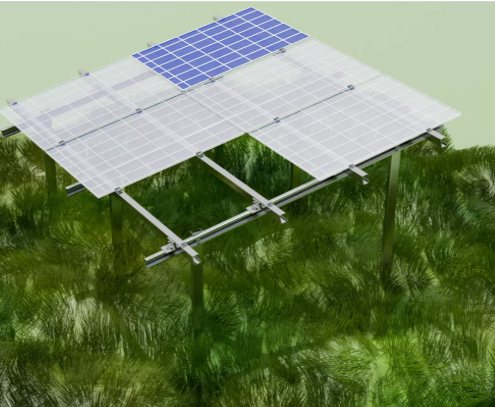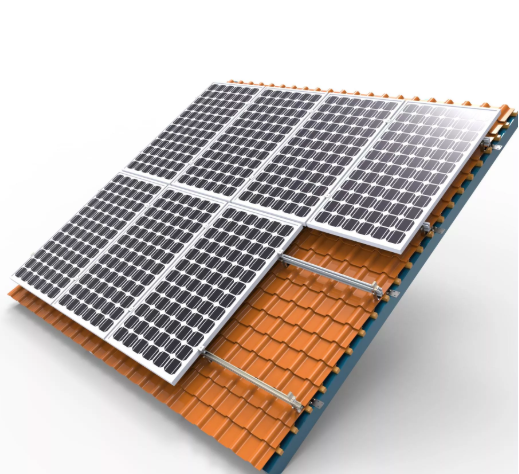


Views: 0 Author: Site Editor Publish Time: 2025-08-28 Origin: Site








Are you confused about which battery system to choose for your RV, boat, or solar setup? Understanding the difference between 12V and 24V LiFePO4 battery systems can be tricky but is crucial for optimizing your power needs.LiFePO4 batteries are increasingly popular for off-grid systems due to their efficiency and long lifespan. In this post, we’ll explore how voltage impacts battery capacity and efficiency. You'll learn which system is best for your specific needs and how to make the right choice.

A 12V LiFePO4 battery system operates with 12 volts, commonly used in small-scale applications. These batteries are often found in RVs, boats, and solar setups with lower power needs. The key characteristics of a 12V system are its portability and flexibility. It is compact and ideal for powering smaller devices like lights, fans, and small appliances.
Common uses of 12V systems include:
RVs and campers for basic lighting and water pumps
Boats for powering radios, GPS systems, and trolling motors
Small off-grid homes with modest energy needs
Advantages of 12V systems:
Cost-effective and simple installation
Easily expandable for small applications
Readily available components and accessories
A 24V LiFePO4 battery system is designed for higher power requirements. It’s ideal for larger systems like off-grid homes, large RVs, and industrial applications. These systems provide more power while reducing current, making them more efficient over long distances. A 24V system typically handles bigger appliances like air conditioners, refrigerators, and large solar arrays.
Common uses of 24V systems:
Large off-grid solar power systems
RVs with high-energy demands like air conditioning
Industrial and commercial equipment
Advantages of 24V systems:
More energy-efficient for larger setups
Fewer components needed for high-power applications
Reduced energy loss during long-distance power transmission
The main difference between 12V and 24V systems lies in voltage and current. A 12V system needs more current to deliver the same amount of power as a 24V system. This means 12V systems experience higher energy loss due to increased resistance in the wiring. On the other hand, 24V systems use less current, which reduces energy loss and makes them more efficient, especially for high-power needs or long-distance transmission.
Why are 24V systems more efficient for high-power applications?
24V systems are more efficient because they need less current, which results in lower energy loss and less heat generation. This makes them better suited for powering larger appliances and transmitting power over longer distances without significant performance loss.
How do 12V systems perform in lower power and short-distance scenarios?
12V systems perform well in small setups where power demands are low and distances are short. They are ideal for applications like RVs or small off-grid homes where only basic devices are powered, and energy loss isn’t a major concern.
Wiring differences: 12V vs. 24V systems
24V systems allow for thinner wiring compared to 12V systems. Since the current is lower in a 24V setup, smaller, more cost-effective wires can be used. This is a significant advantage for large systems where wiring can be a costly and bulky component.
Cost of components: What’s the price difference between 12V and 24V LiFePO4 systems?
Generally, 12V systems are cheaper upfront. The components, including batteries, inverters, and charge controllers, are more affordable for 12V systems, especially for smaller setups. However, 24V systems can offer better long-term value due to their efficiency and reduced need for additional wiring.
Which system is more space-efficient?
24V systems are typically more space-efficient because they require fewer batteries and components for the same power output. With less wiring and fewer batteries, a 24V system can be more compact, saving space in larger setups like industrial systems or large off-grid homes.

12V systems are great for smaller setups where power needs are minimal. They’re ideal for small RVs, boats, or low-energy off-grid applications like lighting and small appliances. If you’re looking for portability, cost-effectiveness, and flexibility, a 12V system is the way to go. These systems are easy to install and maintain, and their components are affordable and readily available.
Opt for a 24V system if you need more power. These systems excel in large RVs, industrial equipment, and high-power solar arrays. If you plan to run devices like air conditioners, large refrigerators, or power tools, a 24V system is more efficient. It can handle high-power devices better, providing a more stable and efficient power supply for demanding setups.
To choose between a 12V and 24V system, you need to calculate your power requirements. First, figure out how many watts your devices need. This is done by multiplying the device's power (in watts) by the number of hours you expect to use it. Once you know the total watts, match it with the appropriate battery system. For lower power needs (below 3000W), 12V systems are ideal. For higher demands (over 3000W), a 24V system will be more efficient and cost-effective in the long run.
Lower cost for smaller systems, making it ideal for basic setups.
Easy installation using basic components and simple wiring.
Availability of parts and accessories, ensuring easy replacements and upgrades.
Limited capacity for high-power devices, especially in larger systems.
More extensive wiring needed for larger setups, which can increase cost and complexity.
Higher efficiency, particularly for high-demand applications like air conditioning and large appliances.
Lower current requirements reduce energy loss and minimize heat generation.
Power larger systems using fewer batteries, which simplifies the setup and reduces space.
Higher initial cost for the system components, including batteries, inverters, and controllers.
More complex setup, requiring specialized components and a more involved installation process.
Setting up a basic 12V battery system is simple and commonly used in small applications like RVs or off-grid cabins. To start, connect the positive terminal of the battery to the positive terminal of the inverter. Then, connect the negative terminal of the battery to the negative terminal of the inverter. For small off-grid systems, you may also need a charge controller to manage charging and prevent overcharging.
Common connection methods for 12V systems include:
Direct connections for single batteries.
Use of fuse boxes for additional safety.
To set up a 24V system, you need to wire two 12V batteries in series. This means connecting the positive terminal of the first battery to the negative terminal of the second battery. The remaining positive and negative terminals will then connect to the inverter or system. This setup gives you a total voltage of 24V.
For a 24V system, you'll also need additional components like:
Inverters designed to handle 24V input.
Charge controllers that support 24V battery systems.
Fuses for circuit protection.
You can create a larger 24V system by connecting multiple 12V batteries in series. To calculate how many batteries you need, determine your total power demand in watts and match it to the battery capacity (in watt-hours).
For example, if your system needs 2400Wh, you would need:
Two 12V batteries at 100Ah to create 24V and store 2400Wh.
Parallel and series connections are essential for scaling up:
Series connections increase voltage (e.g., 12V to 24V).
Parallel connections increase capacity (e.g., from 100Ah to 200Ah).
Which is better: 12V or 24V LiFePO4 system?
Choosing between 12V and 24V depends on your power needs, budget, and system size.
How to make the right decision for your setup.
Assess your specific power consumption and future expansion needs. Select the system that best aligns with your requirements.
A: 12V systems are used in small RVs, boats, and solar setups, while 24V systems power larger applications like off-grid homes, industrial equipment, and high-power solar arrays.
A: Both systems typically last 5-10 years, depending on usage, charging cycles, maintenance, and environmental conditions.
A: Yes, by using a DC-DC converter, you can safely operate 12V appliances on a 24V system.
A: Yes, 24V systems are generally more expensive due to higher component costs, but they can be more cost-effective for larger setups.
A: Proper maintenance includes regular charging, keeping the system in moderate temperatures, and storing the battery correctly when not in use.